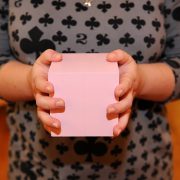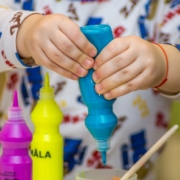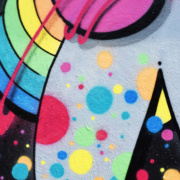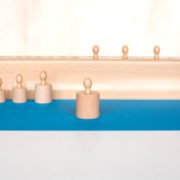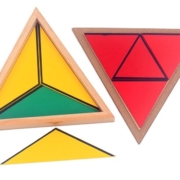Sensorial: Hexagon Box
The hexagon box shows children how different shapes can be used to create other shapes; more specifically, that by joining together different triangles, four-sided figures are formed. The sensorial angle of the lesson means that it can be presented without the use of language but also works as an introduction to geometry for an older child through the naming each of the newly created shapes.

The materials used for this exercise are quite specific but you could adapt the idea for home use. In the classroom, we’d use colour coded triangles:
- One large, yellow equilateral triangle with a black line along all sides
- Ten obtuse-angled isosceles triangles, including:
- a red pair, with a black line along the longer side
- a grey pair, with a black line along one of the equal sides
- six yellow, of which: three have a black line along two of the equal sides and three have a black line along the longer side.
The black lines that highlight certain edges along the sides of the triangle serve as ‘control of error’ – guiding the child in the construction of the shapes. Watch the lesson play out in this tutorial by My Montessori Works:
As you will notice from the video, it’s as simple as: create a shape – name the shape – articulate the number of triangles used to make shape – pack the activity away neatly at the end.
The geometric shapes created by the included triangles are: an equilateral triangle and a hexagon, rhombus and parallelogram. As well as a basic introduction to geometry, a further (indirect) purpose of the lesson is to suggest the concept of equivalence and its application for finding the area of plane figures.
If you’d like further information about this tutorial, feel free to contact us at info@standrewsmontessori.com. We’re happy to answer any questions.

